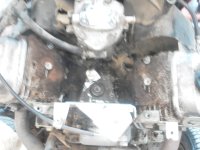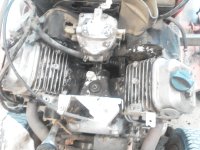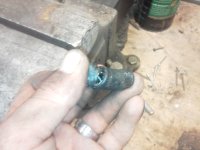If mice got into the shrouds during the winter and built a nest, then that problem will not be solved with compressed air and a blowgun. According to your initial post, the engine runs fine for an hour or so until under-hood heat causes the fuel to percolate. At that point, no fuel pump will be able to suck vapour and keep the carb's float bowl filled. I don't see this as a fuel pump issue and certainly not a fuel cutoff solenoid problem either.
This is why I suggested removing the hood and running the tractor hard while under load, for well over an hour. Doing so will tell you that the problem is with heat build up and not with float levels or the solenoid. I am suggesting that you begin by making sure all of the routine maintenance items are taken care of. That's how PRO mechanics go about it. They set the valves, timing, plug gap etc in accordance with the manual to ELIMINATE them as the possible source of the problem. You seem to want a 5 minute fix and that rarely works out. As you said, the tractor has 1200 hours on it and I'm betting that you are not the original owner. If so, you likely have no idea if ANY service work beyond changing oil and filters has been done. Engine manuals are available to you at the Briggs and Stratton website. if you don't know what you are doing, then perhaps you should take the tractor to someone who does. After all, a new engine will cost you $1500.00 if you end up damaging it by not getting to the real problem now. High heat can destroy engines. But as they say, your tractor, your money. Good luck with the repair.


